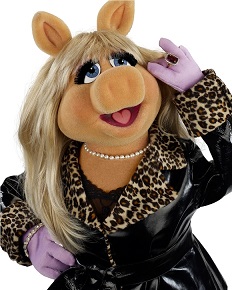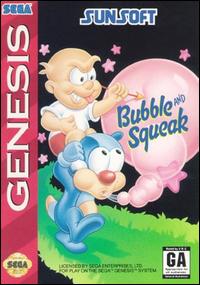Plot
When Zena, Manny, and Joe move into the cinder-block cottage next door, Barney is intrigued by their glamorous, exotic lifestyle. His fascination grows when Zena introduces Barney to their favorite pastime: Interstellar Pig, a board game in which the key objective is to finish the game with the Piggy card in hand.
Zena quickly briefs him on the rules: each player picks their character from a box of cards depicting different aliens. Every alien race has its own strengths, weaknesses, and IRSC (Interstellar Relative Sapience Code, with lower numbers favorable). When the time runs out, every home planet will be obliterated except the one belonging to the holder of the Piggy. Barney is amazed when the neighbors keep choosing the same character cards: Joe repeatedly picks water-breathing Jrlb; Zena always chooses Zulma, an arachnoid nymph; and Manny always picks Moyna, an octopus-like gas bag.
While snooping through Zena's underwear drawer, Barney finds a manuscript written by Captain Latham— the same Captain who had built the house that Barney and his parents were renting— telling of the event that caused his brother to go crazy. At sea, the Captain rescued a man floating in the ocean, described as having a "leathery, greenish, reptilian hide" due to sunburn and a "swollen contusion", "yellow and filmed with slime" on his forehead. Insisting that the man is the Devil, the Captain's brother strangles him—and in punishment, is keelhauled. Although he survives, his mind is damaged due to the oxygen deprivation, and he spends the rest of his life locked in his room (which later became Barney's bedroom), scratching patterns into the wooden walls and clinging to the strange trinket he had taken from the murdered man's corpse.
That night Barney begins to see a pattern in the marks the Captain's brother had scratched into the window of his bedroom: all the scratches centered on a particular rock on a nearby island. Remembering the trinket "to which [the brother] clung as he was pulled from the water, to which he still clings", Barney decides to go out to the boulder and see if the trinket had been hidden there. He finds a small, silver, round object:
There was a face carved in this side, nothing but a rigid, slightly smiling mouth under a single wide-open eye... Crude as it was, the thing seemed alive. And it was the brutal wrongness of it, the mouth smiling with such placid idiocy, noseless, under the solitary gaping eye, that made the face so repellent. The Piggy.
Barney realizes that the game is real, the clock is running, and his neighbors— aliens in disguise— will do anything to get the Piggy. Each tries to bribe him with a unique incentive, similar to the Judgement of Paris, but Barney turns them down. Unfortunately, by doing so, he's just entered the real game as a player representing the human race.
As Barney hurries to select his weapons and equipment before a horde of aliens descends on his cottage, he makes the startling discovery that he shares a psychic link to the Piggy. The Piggy tells him that it created the game so that it could be loved and appreciated, despite its tendency to detonate whole planets (and their surrounding solar systems) from time to time when it hiccups. Barney concludes that the object of the game is backward, and it is only the possessor of the Piggy that will be blown up.
Minutes before his home is destroyed, Barney concocts a plan to pass the Piggy off to another player convincingly enough so that it won't arouse suspicion. He tells the carnivorous lichen where to find the Piggy. However, as they approach it he realizes that the same logical inconsistency exists with Piggy's version of the story. He decides that the only explanation that makes sense is that Piggy created both stories in order to learn about new people. He abandons the Piggy and lets the lichen board their spaceship home, drawing off the other alien players. Once they depart, no damage is done to either the lichen or to Earth.

Miss Piggy is one of the Muppet characters known for her breakout role in Jim Henson's The Muppet Show. Since her debut in 1976, Miss Piggy has been notable for her temperamental diva superstar personality, tendency to use French phrases in her speech, and practice of karate. She was also known for her on-again/off-again relationship with Kermit the Frog which never ends permanently. Frank Oz performed the character from 1976 to 2000, 2002 and was succeeded by Eric Jacobson in 2001. Miss Piggy was inspired by jazz singer Peggy Lee.

The Gorn are a fictional extraterrestrial humanoid reptilian species in the American science fiction franchise Star Trek. They first appeared in a 1967 episode of the original series, "Arena", in which Captain Kirk fights an unnamed Gorn on a rocky planet. The fight scene has become one of the best-remembered scenes of the original series, in part due to the slow and lumbering movement of the Gorn, which some viewers have considered unintentionally comical.
William Warner Sleator III, known as William Sleator, was an American science fiction author who wrote primarily young adult novels but also wrote for younger readers. His books typically deal with adolescents coming across a peculiar phenomenon related to an element of theoretical science, then trying to deal with the situation. The theme of family relationships, especially between siblings, is frequently intertwined with the science fiction plotline.
Andrew "Ender" Wiggin is a fictional character from Orson Scott Card's 1985 science fiction novel Ender's Game and its sequels, as well as in the first part of the spin-off series, Ender's Shadow. The book series itself is an expansion, with some changes to detail, of Card's 1977 short story "Ender's Game."

Beta Ray Bill is a fictional superhero appearing in American comic books published by Marvel Comics. Debuting in the Bronze Age of Comic Books, the character was initially intended to be a surprise; an apparent monster who unexpectedly turns out to be a great hero. As such, Bill is the first being outside the Marvel Universe's Norse pantheon to be introduced as being worthy to wield Thor's hammer, Mjolnir. After an initial rivalry for possession of the weapon, the alien warrior was granted a war hammer of his own, called Stormbreaker, and the two reconciled as staunch allies, going on to fight side by side.

Manifold: Space is a science fiction book by British author Stephen Baxter, first published in the United Kingdom in 2000, then released in the United States in 2001. It is the second book of the Manifold series and examines another possible solution to the Fermi paradox. Although it is in no sense a sequel to the first book it contains a number of the same characters, notably protagonist Reid Malenfant, and similar artefacts. The Manifold series contains four books, Manifold: Time, Manifold: Space, Manifold: Origin, and Phase Space.

Robota (2003) is an illustrated book by Doug Chiang and Orson Scott Card about a mysterious fourth planet of the solar system named Orpheus. In a time before the events of the book, an alien race known as the Olm came to Orpheus and warned the people, explaining that their planet will crash into Earth in several thousand years. The Olm gave humans very advanced technology and the ability to create robots with artificial intelligence. But over the centuries, entropy and mismanagement have taken their toll. The humans have reverted to a preindustrial existence in a world populated with chimerical beasts such as the saurian jodhpurs, relying on bio-sciences for whatever support they can derive. With their mysterious leader, Font Prime, silenced, the robots have fallen under the baneful influence of Kaantur-Set, who directs a program of human extermination. But the robots themselves are on the point of extinction, as their technologies of reproduction no longer work. In this dire end of times, the story follows the adventures of Caps, a human who wakes up inside a metal capsule with no memory of his past.

The Technet are a fictional group of interdimensional travelling bounty hunters appearing in British and American comic books published by Marvel Comics. The characters appeared mostly in the pages of Captain Britain and Excalibur.
X is a science fiction space trading and combat simulator series created by German developer Egosoft. The series is set in the X-Universe where several races populate a number of worlds connected by jumpgates. The games feature free roaming gameplay with trading, combat, empire building, and missions; leading to the series' phrase: "Trade, Fight, Build, Think". The series, which was launched in 1999 on the Windows platform, consists of five base games: X: Beyond the Frontier, X2: The Threat, X3: Reunion, X Rebirth, and X4: Foundations. X Rebirth introduced a new rendering engine as well as a new plot, one which X4: Foundations now extends the storyline beyond ten years after the events in X Rebirth.

V: The Second Generation is a novel written by American telewriter/producer Kenneth Johnson. It is an alternative sequel to his 1983 science fiction television miniseries V, which depicted an advanced race of carnivorous reptilians known as "The Visitors".
History of alien abduction claims describes assertions or claims that people have experienced alien abduction. Such claims came to international prominence in the 1950s and 1960s, but some researchers argue abduction narratives can be traced to decades earlier. Such abduction stories have been studied by investigators who believe that the accounts describe actual, literal interaction with non-human or extraterrestrial entities. Others have investigated alien abduction claims from a more skeptical perspective, arguing they can be best understood as expressions of folklore or various psychological phenomena.

The Killing Star is a hard science fiction novel by American writers Charles R. Pellegrino and George Zebrowski, published in April 1995. It chronicles a sudden alien invasion in a late 21st century technological utopia, while covering several other speculative fiction ideas such as sublight interstellar travel, genetic cloning, virtual reality, advanced robotics, etc.

Ancient astronauts have been addressed frequently in science fiction and horror fiction. Occurrences in the genres include:

Bubble and Squeak is a platform game published for the Amiga in 1994 by Audiogenic Software. It was developed by Fox Williams under the name Barney & Clyde, and they ported it to the Sega Genesis for which it was published by Sunsoft under license from Audiogenic. The game is a childlike sci-fi fantasy platform game in which players control a little human boy named Bubble along with recent alien acquaintance Squeak. The platform levels are separated by brief underwater scrolling shooter bonus segments.
Parasite Pig is a young adult science fiction novel written by William Sleator. It is the sequel to the 1984 book Interstellar Pig.










